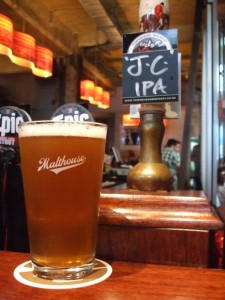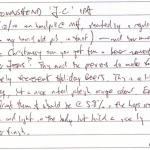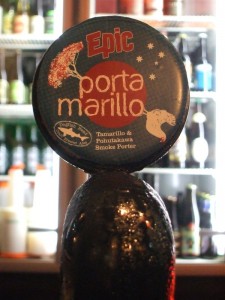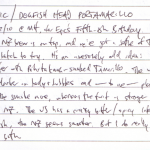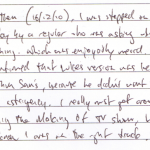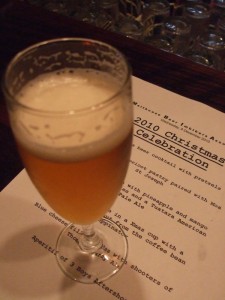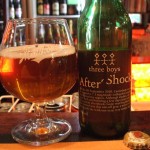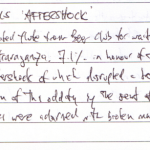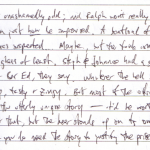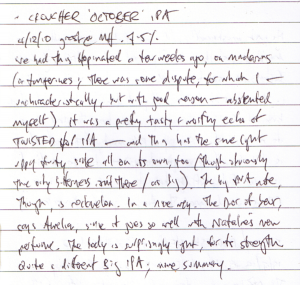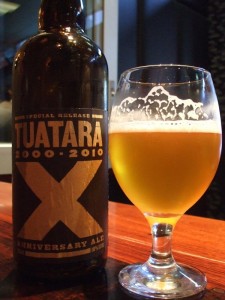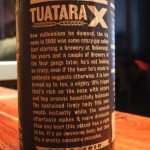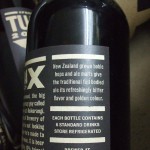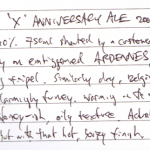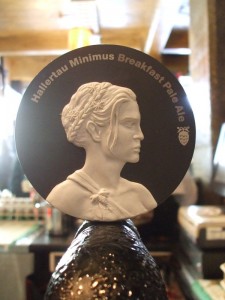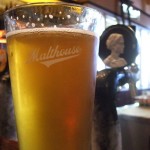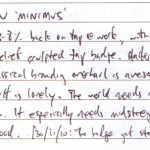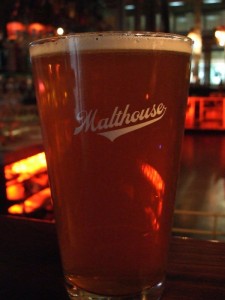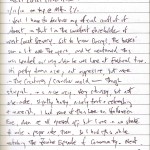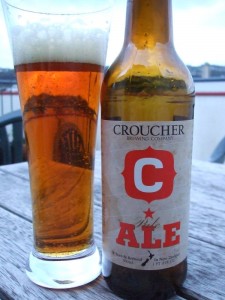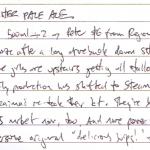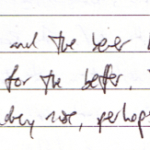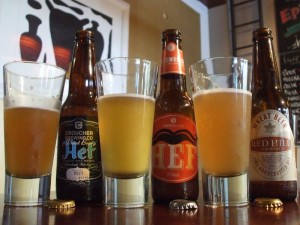
I’m not crash-keen on wheat beers. I mean, I do like several of them very much (Three Boys Wheat is a stand-out example), but I’m rarely quite in the mood — if I want something this light, I usually reach for a golden ale. But that’s just me. It was a stinking hot day, so I indulged myself in a side-by-side(-by-side); I bought the foremost after the Croucher ‘October’ confusion, and had the latter two thanks to my Australian friend Glenn and his duty-free allowance.
I also couldn’t help but put two identically-named beers against each other. I’d have thought that the hefeweizen / Hugh Hefner joke was a common one, but I could only find two others on BeerAdvocate.com.1 I’m torn, deciding a winner on that score — Burleigh put a stonking great moustache on the label, which is awesome, but I thought the Hef himself was pretty much always clean-shaven, which seems to me like Points Off, then.
The variance among the three was quite striking and made for a pleasantly-random scattergun sequence of sips from each — although what amounted to three standard-sized regular-strength beers in quick succession did catch up on me in the heat. Croucher’s was the darkest, tending towards banana cake rather than the habitual-for-hefe fresh banana note. On occasions that side of it seemed too much or just slightly off, but it wasn’t a deal-breaker. Burleigh’s was much more in that ‘classic’ mode with light, fresh fruitiness, and then Red Hill’s threw in what I thought was a pretty noticeable hop sideline — possibly dragging it out of the traditional form, but interestingly so.
My absolute favourite factoid about German-style wheat beers centres on that banana flavour. Learning about how the yeast just coincidentally made that very-familiar ester was an early Beer Nerdery moment for me (tutored by my biochemistry-majoring friend Toby, out on the balcony of the original Malthouse with a Tuatara tasting tray), but the best bit is that the Germans have been making hefe since long before they ever had bananas imported. So where we normally meet the fruit first and then think that the beer tastes like it, there must’ve been a point in history where Germans would first try this odd exotic fruit and say to themselves “damn, this tastes like wheat beer“. How wonderfully odd. I really must try to track down a historical reference.
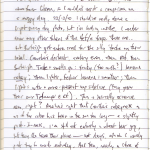
Verbatim: Croucher ‘Hef’, Burleigh ‘Hef’ & Red Hill Wheat Beer all 330ml + 5%, latter two from Glenn, so I couldn’t resist a comparison on a muggy day. 22/12/10 I should’ve really done a bright sunny day photo, but I’m hiding inside. I wonder how many other tokens of the Hef/e trope there are… But Burleigh get extra cred for the silly ‘tache on their label. Croucher’s darkest, ambery even, then RH, then Burleigh. Taste + smells go: funky (too much?) banana cakey; then lighter, fresher banana: smoother; then light + with a more-present hop sideline (they grow their own Tettnanger @ RH). This is basically science now, right? Amelia’s right that Croucher’s cakeyness is as if the cake has been in the sun too long — a slightly past-it-ness. I’m still not entirely a wheat beer guy, but they do have their place — hot days. Which I usually just try to avoid entirely. And then, nearly a litre of wheat beer inspired some Proper Science; a 3:2:1 blend. Turned out superchoice.
1: And even then — one (‘Head High Hef’ from Breakwater Brewing) hardly seems an overt reference, and the other (‘The Hef’ from Gardner Ale House) isn’t even made any more. More are quite-possibly lurking on RateBeer.com, but my advanced-search-fu was insufficient to bring them out.

